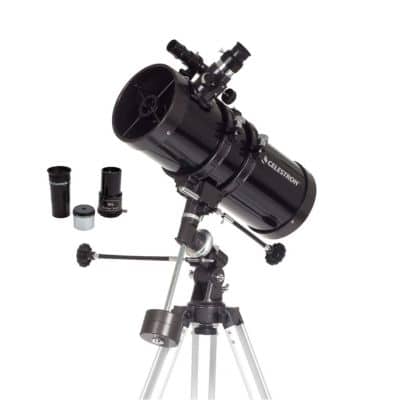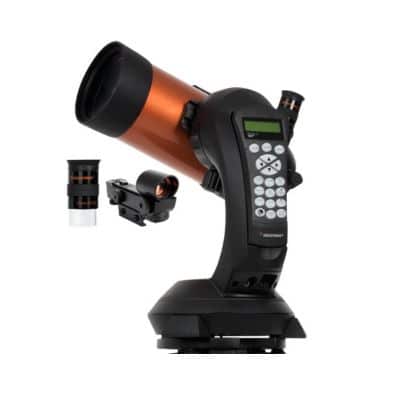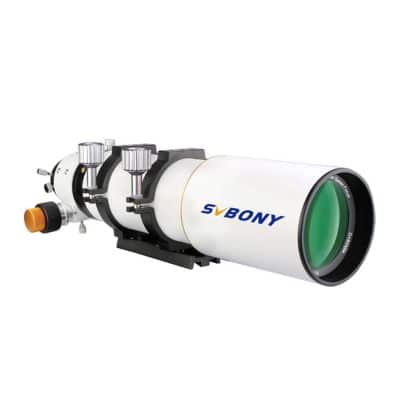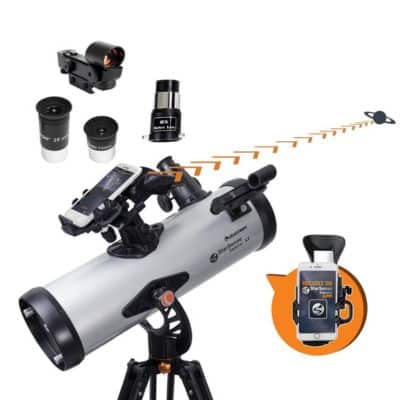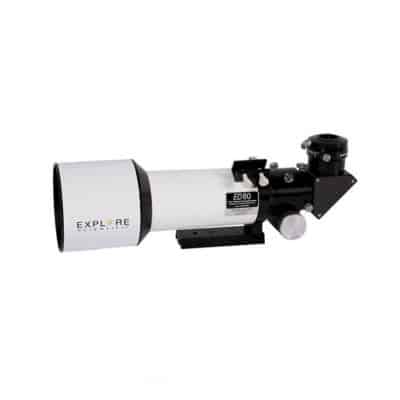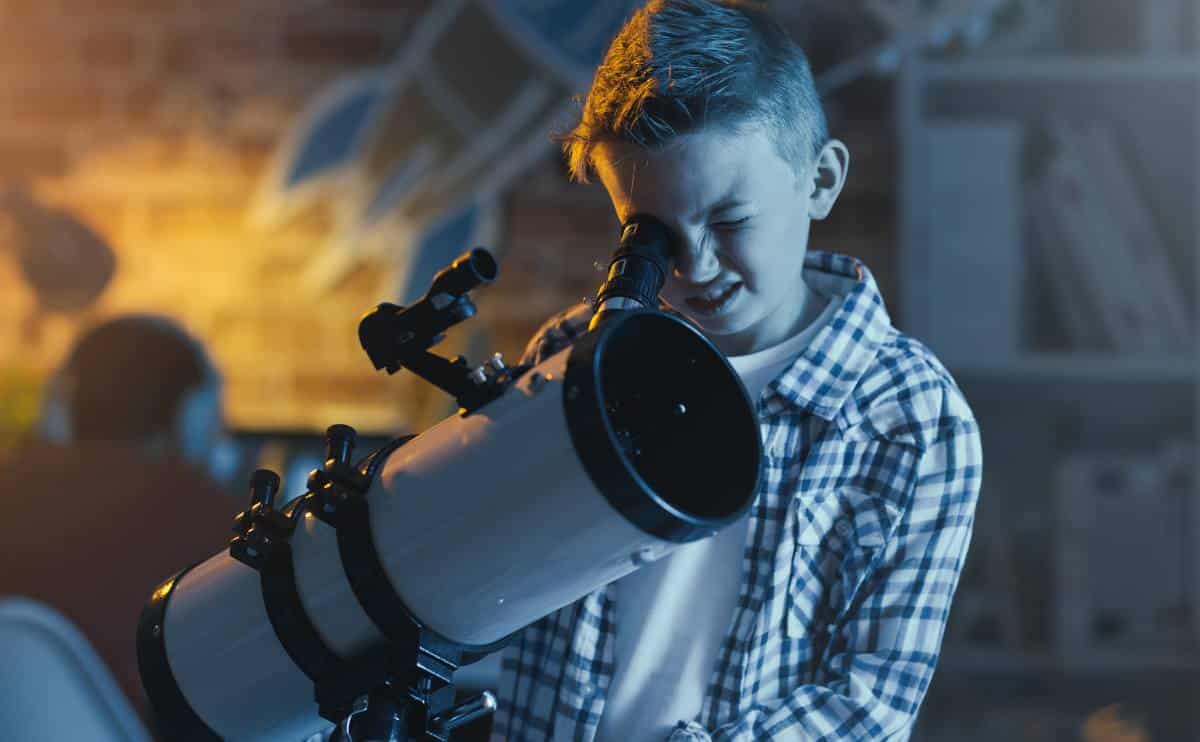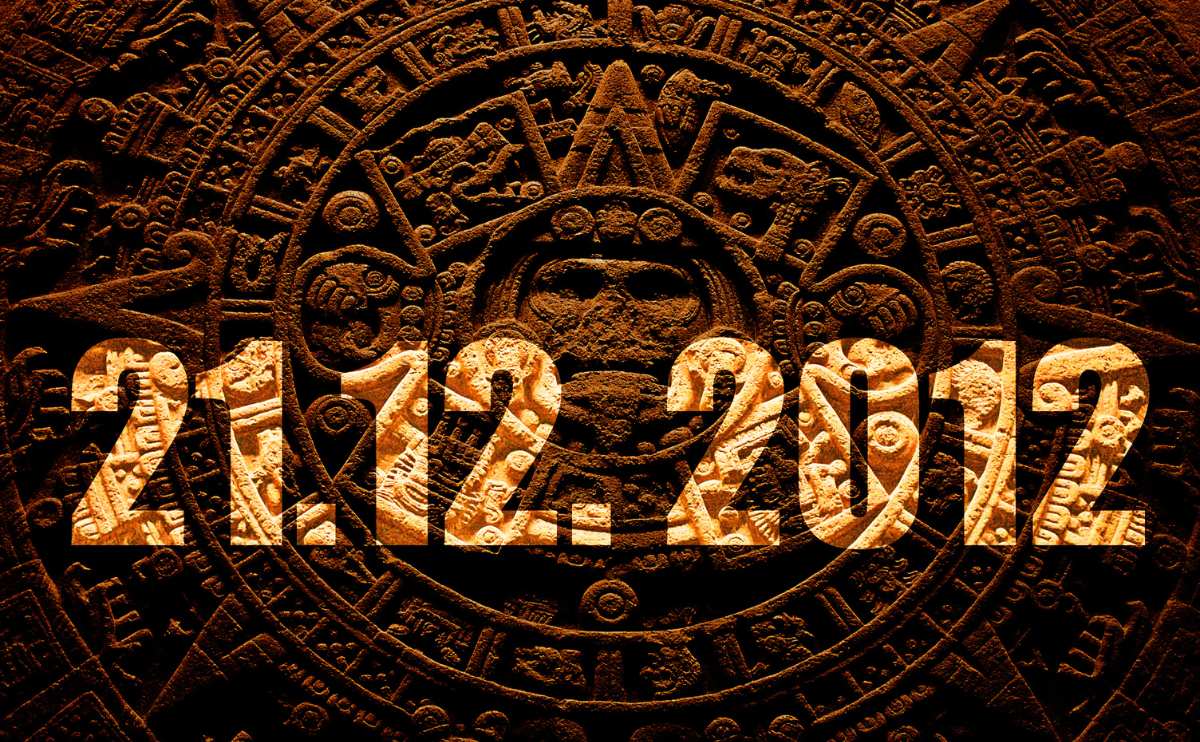Best Beginners Telescope: Celestron vs SVBONY vs Explore Scientific
When you purchase through links on our site, we may earn a commission. Here’s how it works.
Skywatching is a fun hobby. For some, it starts in childhood; for others, the interest is sparked by a school assignment, a friend with impressive space knowledge, or simply a curiosity for the unknown. The interest in seeing beyond our world fascinates people of all ages, and to truly explore, you need tools like a telescope.
Finding the best telescope may be a challenge for beginners new to skywatching. Not all telescopes work the same, nor are they intended for the same purpose. As a long-time stargazer, I’ll give you some important advice on how to find the best telescope if you’re a beginner. I also offer my history of hits and misses as I became more of a pro.
| Overall | Planets | Astrophotography | Budget | Premium |
|---|---|---|---|---|
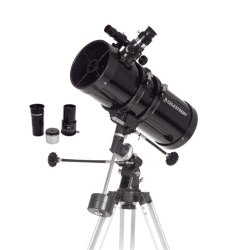 | 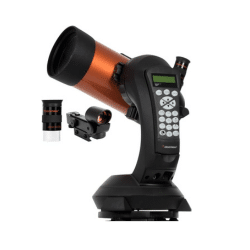 | 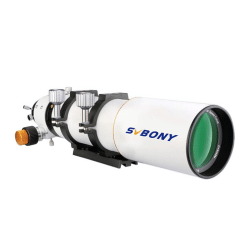 | 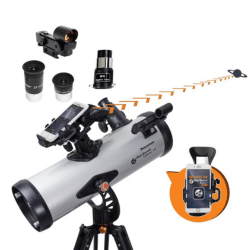 | 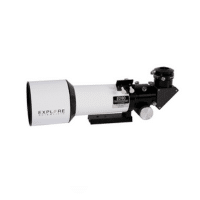 |
| Celestron PowerSeeker | Celestron NexStar | SVBONY | Celestron StarSense | Explore Scientific |
| View on Amazon | View on Amazon | View on Amazon | View on Amazon | View on Amazon |
| Read Review | Read Review | Read Review | Read Review | Read Review |
What Kind Of Telescope Is Best For Beginners?

Telescopes are a popular investment and gift for adults and kids alike. For many, they are a way to pursue a new interest, especially those with a curiosity about the stars. People interested in simple visual observation to learn about constellations and see planets will need a different scope than those looking to capture images with astrophotography.
For those of you just getting started, there’s a bit of basic knowledge you’ll want to know first before purchasing any telescope. I’ll help break all of this down for you.
Important Telescope Terms
Before making any purchase, there are a few things you may want to know about a telescope, the parts, and the purpose of those parts. This knowledge can help you purchase a scope you can use easily. I have personally made the mistake of buying a telescope that was too complicated for me to use. It was a costly and inconvenient mistake and made using it very stressful until I replaced it with one that was more at my skill level.
I recommend spending some time learning about how a telescope works if you have never used or owned one before. I’ll review a few essential terms and functions to get things started.
- Aperture – Aperture refers to the diameter of the primary lens or light-gathering mirror (called the objective). Aperture is usually measured in millimeters, though some scopes use inches. The larger the aperture, the finer detail you can see. Beginner scopes should have an aperture of at least 70mm or 2.8 inches. Larger is better, especially if you live in a more populated, urban area. Smaller scopes work better in more rural, darker locations. That said, a larger aperture will always give you a more striking view. Magnification differs from aperture, so be wary of scopes that use magnification as a selling point.
- Eyepiece – The eyepiece is the part of the telescope you look through and an essential part of the machine. It takes the captured light and focuses it to magnify the image. The smaller the eyepiece (10mm or 20mm, for example), the higher the magnification. Most beginner telescopes come with an appropriate eyepiece to get you started. If you want more magnification, you can add an eyepiece with higher magnification, like 6mm or 8mm.
- Finderscope – A smaller scope that helps you sight and line up objects to view.
- Focal length – Focal length is the distance, in millimeters, between a telescope’s primary mirror or lens and the point where the light rays become connected and focused. Focal length is an important factor in how powerful a scope is. A good rule to remember is that a long focal length creates a narrower field of view with higher magnification, and a shorter focal length creates a wider field of view with lower magnification. If you want wider views, go with a shorter focal length. If you want more details but a smaller view, pick a longer focal length.
- Focal ratio – Focal ratio is found by dividing the focal length by the aperture. It refers to the speed and light-gathering ability a telescope has. Remember, the smaller the focal ratio, the lower the magnification a scope has. As the f-ratio increases, the images appear larger but dimmer.
- Focuser– A focuser is the eyepiece part that helps you focus on the image.
- Magnification – This is the ratio between the observed size of an object and its actual size. Magnification is also referred to as power in some cases.
- Magnitude – Magnitude is a measure of a celestial object’s brightness. The lower the magnitude, the brighter an object.
- Manual – Manual telescopes do not have electronic components and must be fully adjusted and focused by hand.
- Mount – The structure that supports a telescope. It holds the scope and allows you to move it and point it in specific places. Some are manual, others, like the GoTo mount, are motorized.
- Light pollution – Excessive light that impacts your ability to view the sky.
- Objective – The objective is the primary light-gathering component, either a lens or a mirror.
- Resolution – Resolution refers to the resolving power a scope has and how well it can separate objects that are close together so you can see them. This translates to how much detail you can see. Resolution can be measured in arcseconds. The lower the arcsecond, the higher the resolution. Higher resolution means more detail can be seen. So, look for a lower arcsecond number to get a more precise picture.
3 Types Of Telescopes
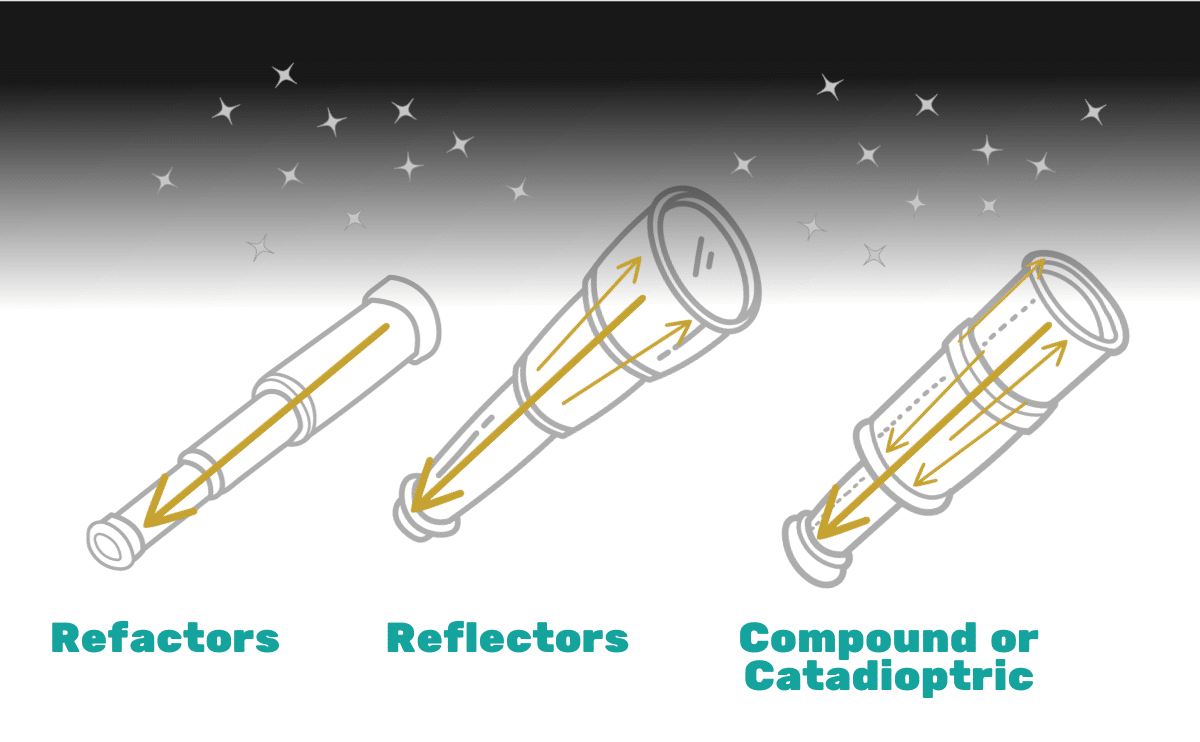
Not all are suitable for backyard and hobby sky gazing. Radio telescopes, for example, detect and measure radio waves from space. The James Webb Space Telescope is an incredibly powerful scope that uses infrared light, which cannot be seen by the human eye, to capture breathtaking, never-before-seen images of space. No beginner telescope can capture radio waves or infrared images, but they can still show impressive views beyond our atmosphere.
There are three main types of telescopes to consider:
- Refactors – Refractors are the kind of telescope most people know about. These have a lens set at the front of the tube.
- Reflectors – Reflector telescopes have a mirror at the rear of the tube that gathers light.
- Compound or catadioptric– A compound telescope uses both lenses and mirrors
6 Things To Look For In A Beginner Telescope
A good telescope for beginners will be straightforward to use but also of good quality. Of course, what is best for one person may not be for another, depending on your skill level, interest, and intended use. Consider the following:
- Intended purpose – Do you want to look at planets or the deep sky, take pictures, or simply observe? For example, look for a larger aperture if you want to take photographs.
- Location of use – The physical location where you plan to use the telescope impacts the type you buy. Some scopes are not as portable as others. A lightweight, easy-to-move scope is best if you plan to stargaze on the go. On the other hand, if you want to set up an asteroid observatory in the backyard, a heavier, more robust scope is better suited.
- Setup – How easy is the scope to set up? A manual scope may be more complex to use than a computerized one. A tabletop telescope is lightweight, easy to operate, and has a simple setup.
- Ease of use – As a beginner, you want to avoid anything too complicated or intimidating to use. Look for something easy to use so you don’t spend your time frustrated by learning a bunch of technical stuff you don’t need or really understand.
- Storage – Where do you plan to store the scope when it’s not in use? Storage is essential to consider as telescopes take up room, whether in use or not.
- Budget – Budget is a huge consideration. Many telescopes can cost hundreds, if not thousands, of dollars. Beginners may not want to shell out that much at first, but buying a cheaply-made product will be a disappointment in the long run.
It is very important not to choose a telescope you are intimidated by. Learning too many features may be complicated and discouraging, so keeping things simple is a good approach for beginners. The last thing you want is to purchase a scope and have it be too frustrating to use. Realistically consider your space, ability, and intent before making your final selection.
If you are totally new to telescopes, try to find a place like your local observatory or science museum to see if they have some you can take for a test run. Astronomy clubs are wonderful places to find advice and information on local stargazing events to help you get your feet planted and your scope focused.
Best Beginner Telescopes
We’ve researched some of the top options for beginner astronomers.
Best Manual Beginner Telescope: Celestron PowerSeeker 127 EQ Review
Celestron is a well-known and trusted brand. I personally have purchased three Celestron scopes in my lifetime, and with proper care, they all still work. The Celestron PowerSeeker 127EQ is a well-made and reliable choice for beginners. For a telescope under $300, it’s a very well-crafted scope that can open you up to hours of celestial exploration. This model is great for nighttime viewing and can give you a beautiful view of the moon, planets, stars, and more.
The Celestron 127EQ requires no tools for setup. It also has an easy-to-use equatorial mount and an adjustable, full-height tripod. The scope has a finderscope, which is immensely helpful in finding and lining up objects to focus on. You can also download the Starry Night basic software edition to access a 36,000 celestial object database to help map out what you want to see. Everything you need to get started sky gazing is included, and it’s easy to move if you want to take the PowerSeeker on the go.
The PowerSeeker scope is a Newtonian Reflector, which means it uses a mirror to capture light and focus it towards the eyepiece. The eyepiece has two eyepieces, a 20mm and a 4mm, each with a 3x Barlow lens which triples the magnification. The PowerSeeker also has two slow-motion control knobs. These allow users to make fine-point adjustments to the objects they see for the best image.
| Pros | Cons |
|---|---|
| Includes a finderscope | Manual |
| Free Starry Night basic software download | Takes time to learn |
| Easily portable | |
| Good for viewing the moon, stars, and planets | |
| Slow-motion control knobs | |
| Includes a 2-year warranty for U.S. customers |
Price & Tech Specs
- $229.49
- Dimensions: 29.92″D x 16.73″W x 8.46″H
- Weight: 21.38 pounds (assembled)
- Focal Length: 1000mm
- Focal Ratio: f/8
- Resolution: .91 arc seconds
- Clear Aperture: 127mm
Best Beginner Telescope For Planets (Computerized): Celestron NexStar 4SE Review
The Celestron NexStar 4SE is a fully computerized telescope perfect for beginners and experienced stargazers. This Celestron model does not require the same level of precise physical adjustment as manual telescopes. It is less portable and works best in a stationary setting. The Nexstar 4SE is easy to set up, and you can visually observe the great big universe in just a few minutes.
Once set up, the NexStar 4SE comes with a controller, making it easier to use than other versions, which require control through an app. Sometimes, learning new things one at a time works best, and this scope lets you see extraordinary celestial objects while learning more about how the telescope works and its different features. Images are clear and crisp. This scope is perfect for viewing the moon and planets, but there are better options for deep-sky viewing.
The NexStar 4SE is mounted on a fully motorized GoTo mount. With access to a database of over 40,000 celestial objects, you will have plenty to look at through this scope. The mount locates and tracks objects, and the SkyAlign technology helps you get this focused and aligned so you can quickly see and marvel at cosmic objects.
It includes a download of the top-rated Starry Night Special Edition astronomy software program. The scope also comes with a steel-tipped tripod with a built-in wedge for astrophotography. The NexStar 4SE is one of the best beginner telescopes for adults and older kids.
I purchased a NexStar model several years ago and was delighted with the purchase. I selected this because it was easy to use and could help find objects to look at. The scope was purchased as a gift for my dad, who had used manual telescopes until then. As he got older, he had a more challenging time using the fully manual one and expressed disappointment in not being able to get outside as much as before.
The computerized model was a massive upgrade, enabling him to spend hours outdoors, looking at objects he had never seen before. Being able to do some things manually, like focus, was nice, as it gives the user that hands-on feeling. I highly recommend NexStar. It is well worth the higher price tag.
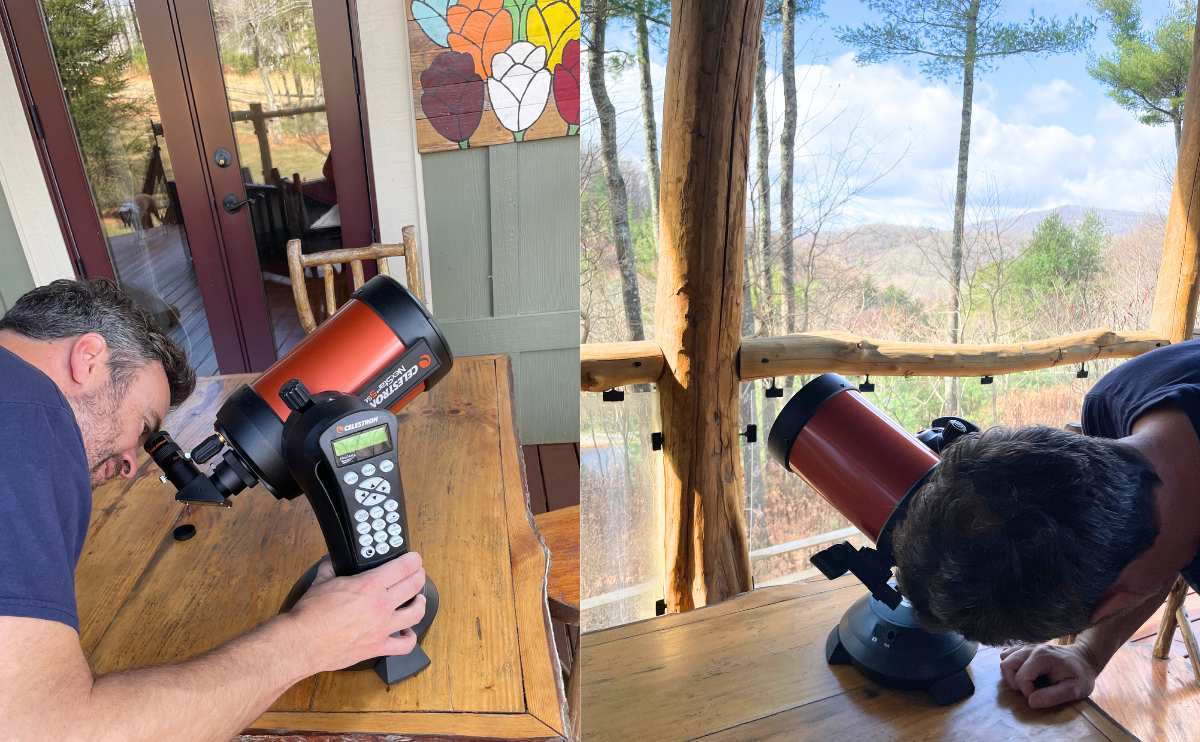
| Pros | Cons |
|---|---|
| Computerized telescope | Not super portable |
| Automated GoTo mount | A heavier scope |
| Easy-to-use controller | Takes time to learn all the features |
| Breaks down for easy storage | |
| Good to view the moon, stars, and planets | |
| Can be used for astrophotography (taking pictures) |
Price & Tech Specs
- Check Amazon for availability
- Dimensions: 32.4″D x 27.2″W x 13.4″H
- Weight: 30 pounds
- Focal Length: 1325mm
- Focal Ratio: f/13
- Resolution: 1.14 arc seconds
- Clear Aperture: 102mm
Best Telescope For Beginner Astrophotography: SVBONY SV503 80ED F7 OTA Review
Astrophotography is a photography type that involves taking photographs of objects in space, also called astronomical objects. One could also describe it as astronomy photography. Astrophotography can mean anything from snapping a picture of the moon or an eclipse through your cell phone to using thousands of dollars in sky-watching and camera equipment to capture high-resolution images. The good news is that astrophotography beginners do not have to spend thousands of dollars to capture amazing images.
Deep sky astrophotography looks for distant nebulas and galaxies, such as the Milky Way, Orion Nebula, and Andromeda Galaxy. Wide-field astrophotography is more common, captures a broader field of vision in the frame using a wide-angle lens, and requires less equipment. We recommend wide-field astrophotography for beginners.
Remember that some astrophotography telescopes can run in the thousands, even tens of thousands of dollars. We certainly do not recommend getting one of those to start with. Look for something that fits your budget and skill level. One of those pricier scopes can be a purchase down the line when you are more familiar with astrophotography and what you want to do with it.
Considering budget, ease of use, and availability, the SVBONY SV503 is a top selection for those just starting with astrophotography. The telescope uses extra-low dispersion, or ED glass, offering a very crisp, clear image with less light absorption. It provides a wide, bright field view, perfect for capturing astronomical photographs.
Along with the ED lens, the scope has a focuser that can rotate 360 degrees, which is helpful when taking images. The SVBONY is a good pick for adults, as it requires manual focus, which is often preferable for photography. However, an auto focuser upgrade is available.
The SVBONY SV503 is designed for optimal sky viewing and image taking. Of course, you will also need a camera, cellphone, or other device to capture your photos, which will play into the image quality. This scope offers outstanding images, day or night. It is easy to set up and portable, so you can take it with you high into the mountains or across the plains or simply use it right from your back porch.
| Pros | Cons |
|---|---|
| ED glass for crystal clear image | Slow tech support |
| Multi-coated optics | Higher price |
| Made for astrophotography | Takes time to get focus and set up just right |
| Solid build | |
| 36o degree focuser rotation |
Price & Tech Specs
- $359.99
- Dimensions: 20.47″D x 7.87″W x 8.07″H
- Weight: 8 pounds
- Focal Length: 560mm
- Focal Ratio: f/13
- Resolution: 1.5 arc seconds
- Clear Aperture: 80mm
Best Beginner Telescopes Budget Pick: Celestron StarSense Explorer LT 114AZ Smartphone App-Enabled Review
Celestron makes several options for beginner telescopes for adults and kids. A budget option is an excellent place to begin for many folks just dipping their toe into the skywatching universe. Budget does not have to mean poor quality. Celestron is a long-standing name in the space viewing industry. They’ve been around since 1960 and make options for just about everyone. We like the StarSense Explorer LT 114AZ Smartphone App-Enabled scope as a budget pick. Starting at under $200, it will offer hours of skywatching excitement.
The StarSense Explorer works with a cell phone and is compatible with either an Android or iPhone. One thing that makes this one so easy to use is the minimal setup and the app, which directs you with arrows on how to locate objects in the sky. The app suggests objects to view based on your exact location so that you can see space objects from the city or a darker, less congested area.
If you want to use the StarSense Explorer without your phone, it has a red dot finderscope, so you can get a little more hands-on. The kit comes with a sturdy tripod, which is easy to pack up and move. The StarSense Explorer is lightweight, making it a versatile, budget-friendly pick. Though designed for beginners, this space spyglass is no joke. You will be truly astonished at what you can see through it.
| Pros | Cons |
|---|---|
| Smartphone enabled | Takes some time to learn and properly align |
| Easy-to-use and locate objects | Some users report fuzzy views |
| Good for viewing deep-sky objects | |
| 2-year U.S. warranty | |
| Reliable brand | |
| Easily portable |
Price & Tech Specs
- $239.00
- Dimensions: 38″D x 33″W x 52″H
- Weight: 10.4 pounds
- Focal Length: 1000mm
- Focal Ratio: f/9
- Resolution: 1.02 arc seconds
- Clear Aperture: 114mm
There are plenty of different telescopes to choose from, and for beginners, that vast selection can be part of the problem. It is challenging to know what you want if you are unsure of what you need or are totally new to using telescopes. Keeping things simple is the best way to go when finding your footing. There is no need for a massive investment.
A few hundred dollars can get you a top-quality, reliable sky-watching tool you can use for years. I purchased a Celestron 114 EQ Reflector (not quite the same model as reviewed here) many years ago, and it still works perfectly today. These reliable models can last for years, even decades, with proper care.
Best Premium Beginner Telescope: Explore Scientific 80 mm Essential Air-Spaced ED Triplet Refractor Review
If you are looking for a premium telescope option and are willing to spend a little more, the Explore Scientific ED80 is a top pick. It is suitable for viewing and amazing for astrophotography. The triplet telescope provides high-contrast images with color correction. It has a dual-speed focuser with a precision knob and uses ED glass for better views. The focuser has a locking mechanism, which is helpful to use while taking images and keeps your camera in place.
The Explore Scientific has high visual performance, and viewers can see bright images of the moon and clear views of deep space. The scope is small and easily mounted on other telescopes to expand viewing potential. It is very easy to move and can be easily taken to different stargazing locations. This scope is made of stainless steel and aluminum, meaning it is very sturdy and can stand up to years of use with proper care.
| Pros | Cons |
|---|---|
| Triple refractor | Higher price |
| High-contrast images | Takes time to learn |
| Good for viewing deep-sky objects and planets | |
| Lightweight | |
| Easily portable | |
| Very good for astrophotography |
Price & Tech Specs
- $599.99
- Dimensions: 21″D x 9″W x 9″H
- Weight: 7.5 pounds
- Focal Length: 480mm
- Focal Ratio: f/6
- Resolution: 1.45 arc seconds
- Clear Aperture: 80mm
One wonderful thing to remember about star searching and sky gazing is that it is an activity that everyone can enjoy. People of all ages, from near and far, come together to watch the skies. I personally have met so many interesting people while sky gazing.
From my own experience, there is nothing quite like seeing a celestial object or event with your own eyes, especially one that others in your lifetime may never see again. I’ve been lucky enough to witness a few of them, including Haley’s Comet, the NEOWISE Comet, plenty of meteor showers, solar and lunar eclipses, and occasionally that elusive shooting star.
Other Ways To Explore & Boost Your Mind
Looking up at the sky is one activity that will never grow old, no matter what age you are. If you liked learning about beginner telescopes, learn more in our article about the best telescopes. Or, should you want to take your sky-watching on the go, we cover some of the best travel websites.
What’s your favorite place to stargaze? Let us know your telescope experience and tips in the comments section below.
